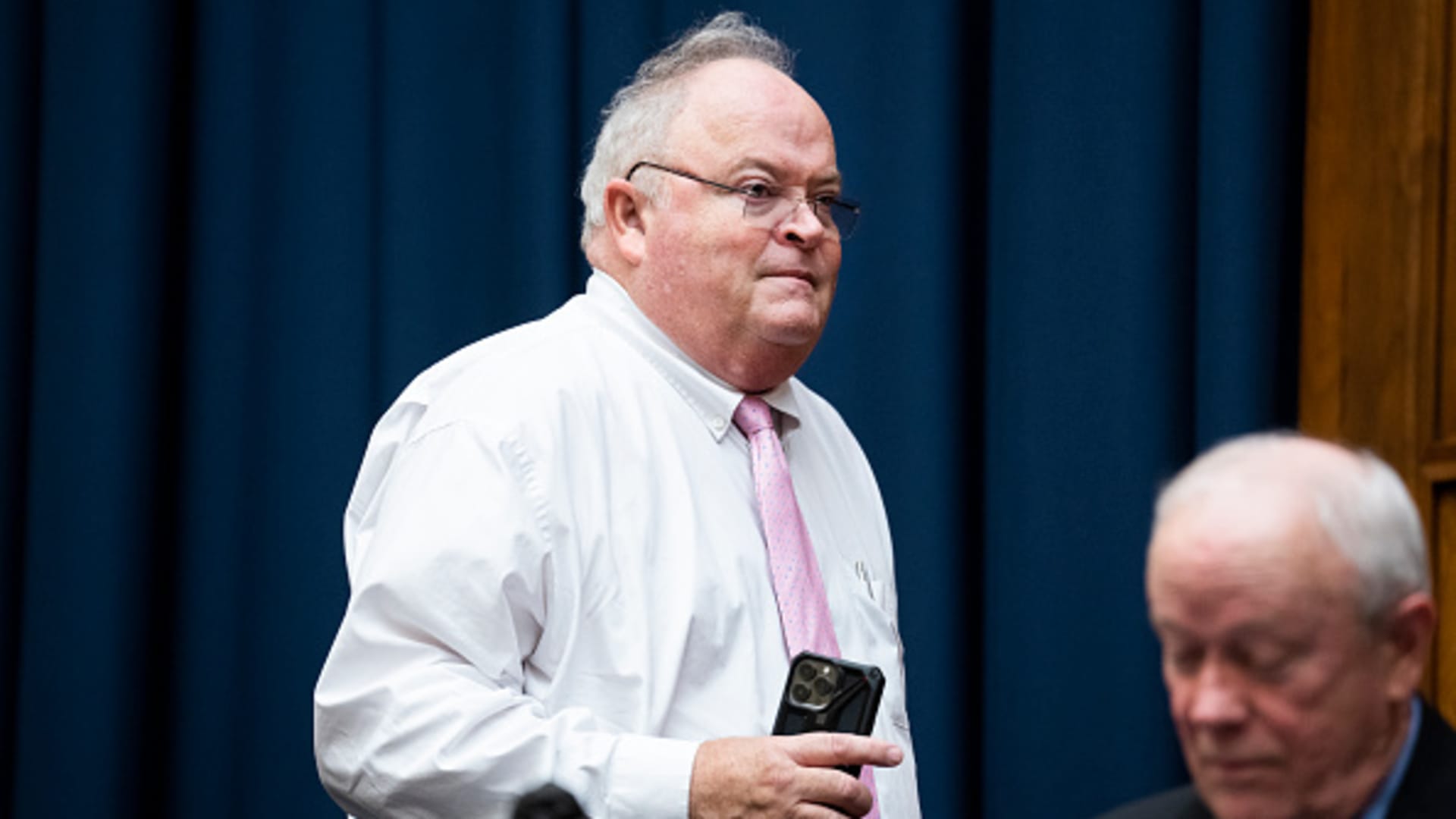Hinterhaus Productions | Getty Images
As a historic wave of baby boomers reaches retirement age, finding affordable long-term care is a challenge.
“We’re going to have a major storm coming in our country with all these folks that can’t take care of themselves,” Rep. Tom Suozzi, D-New York, said Thursday at the Employee Benefit Research Institute policy forum in Washington, D.C.
When Suozzi was growing up, all four of his grandparents lived with his family, who took care of them.
That experience inspired Suozzi’s parents to buy long-term care insurance. Both of his parents lived into their 90s and were able to stay at home, thanks to those policies, he said.
Now, that same insurance coverage is out of reach for many Americans.
“People can’t afford long-term care insurance anymore,” Suozzi said. “The insurance companies, when they made a bet on this the first time around, they lost a lot of money because they didn’t take into account that a lot of people live much longer than their actuarial tables.”
More from Personal Finance:
Student loan borrowers may find bankruptcy harder under Trump
College enrollment falls 5% for 18-year-old freshmen
‘Dynamic pricing’ was a top contender for word of the year
Meanwhile, nursing homes and Medicaid are not equipped to handle the issue, he said.
To address that, Suozzi said he plans to reintroduce a bill called the Well-Being Insurance for Seniors to be at Home, or WISH, Act. The proposal calls for the federal government to create a fund for catastrophic long-term care to help older Americans age at home.
Suozzi last introduced the bill in 2021. That version of the proposal called for long-term care benefits to be available to individuals who have reached retirement age and who are disabled, have severe cognitive impairment or who are unable to perform at least two activities of daily living.
Like Social Security and Medicare, Americans would also need to contribute to the program through a payroll tax to receive the benefits.
The amount of benefits received would be around $3,600 to $4,000 per month, Suozzi said on Thursday. Per the 2021 proposal, that is based on the median cost paid personal assistance for six hours per day.
Waiting periods for care would be based on income, with longer delays for coverage for higher income individuals.
A ‘tough sell’ to raise taxes
Admittedly, the proposal could face hurdles to gaining support.
“The challenge is nobody wants to raise taxes for anything,” Suozzi said on Thursday.
It is a “tough sell” to tell people that there’s a mandatory tax for long-term care, particularly since not everyone will need those benefits, Ben Veghte, director of the WA Cares Fund, said Thursday during a separate long-term care discussion at the EBRI conference.
The WA Cares Fund is a public long-term care insurance program provided to workers in the state of Washington. It is funded by a 0.58% tax on employee’s gross wages.
An estimated 7 in 10 people will need long-term care in their lifetimes, according to Veghte. But that often prompts people to wonder about the other 3 in 10, and why those people have to pay taxes for benefits they may never receive.
In the next decade, at least two or three states will attempt to create long-term care programs like Washington’s, Veghte said. Among the states exploring the idea include California, New York, Massachusetts, Pennsylvania and Minnesota, he said.
Once that happens, the private insurance industry will likely start to offer supplemental products, Veghte said.
“It’s going to take all of us to address the costs associated with long term care and the crisis ahead of us,” Veghte said. “It’s private industry, it’s government, it’s employers, it’s family caregivers, because we know the cost is more than just financial.”


 Economics1 week ago
Economics1 week ago
 Economics1 week ago
Economics1 week ago
 Personal Finance6 days ago
Personal Finance6 days ago
 Economics5 days ago
Economics5 days ago
 Economics1 week ago
Economics1 week ago
 Personal Finance1 week ago
Personal Finance1 week ago
 Personal Finance1 week ago
Personal Finance1 week ago
 Economics4 days ago
Economics4 days ago










